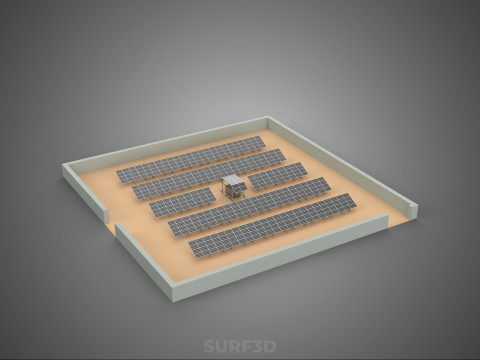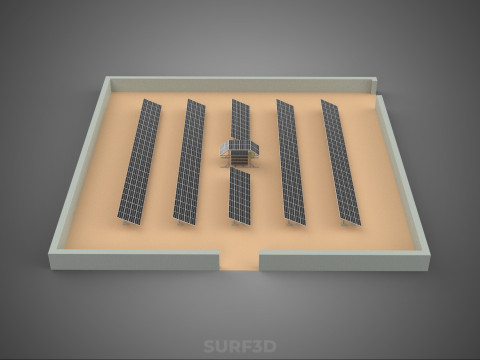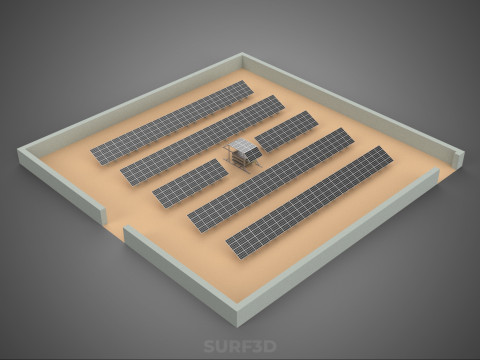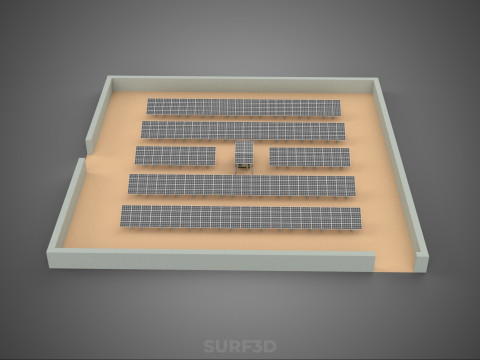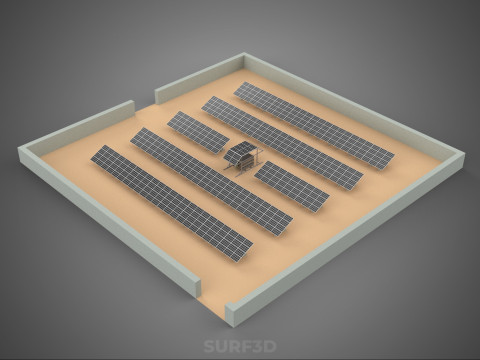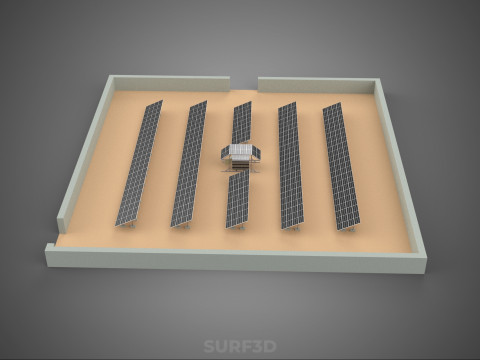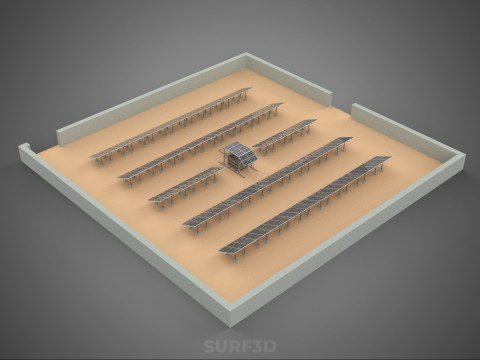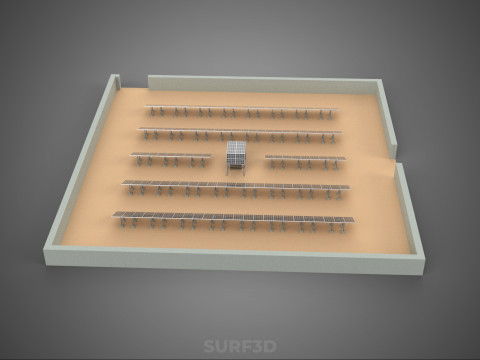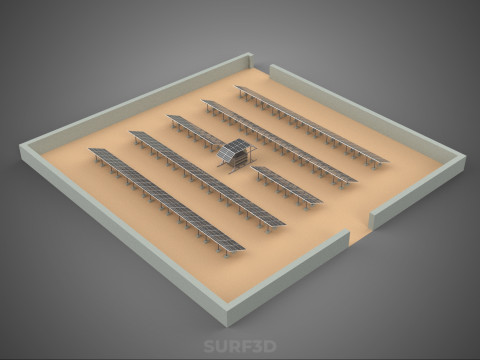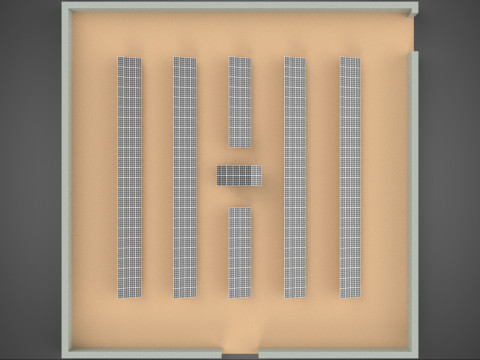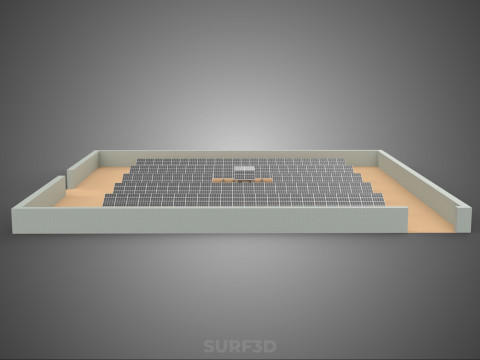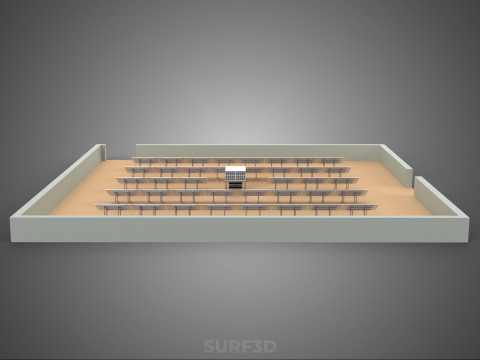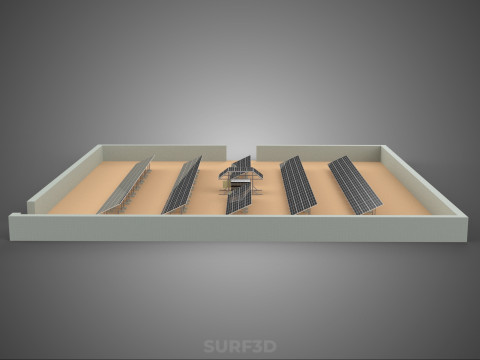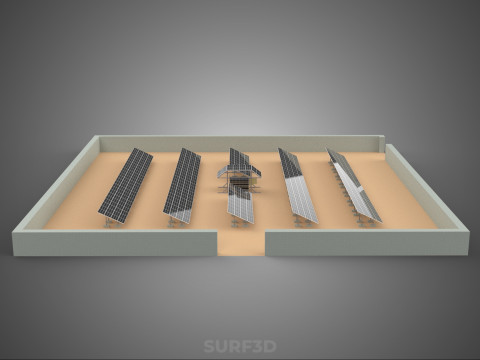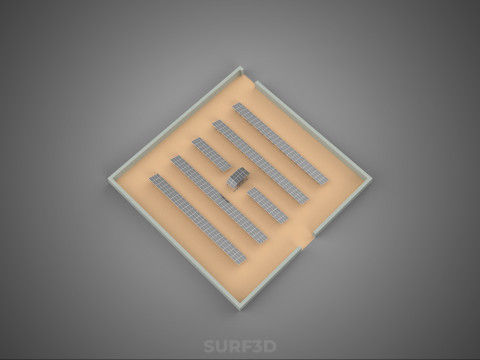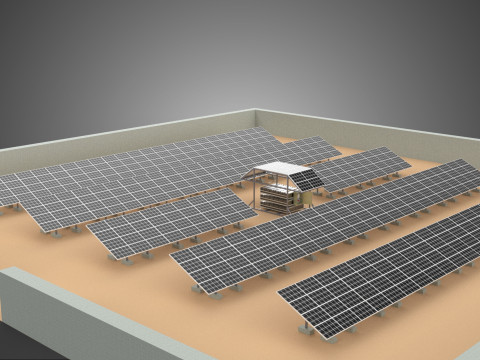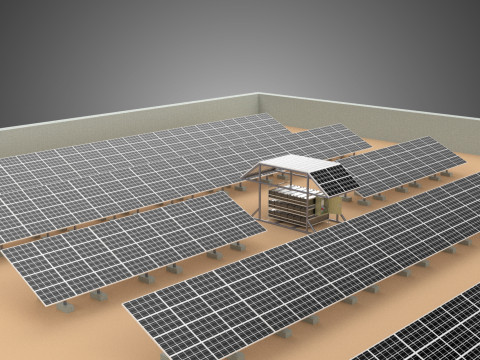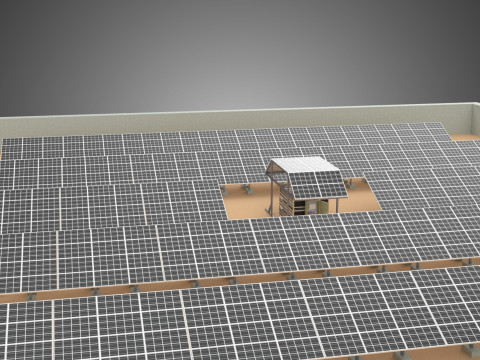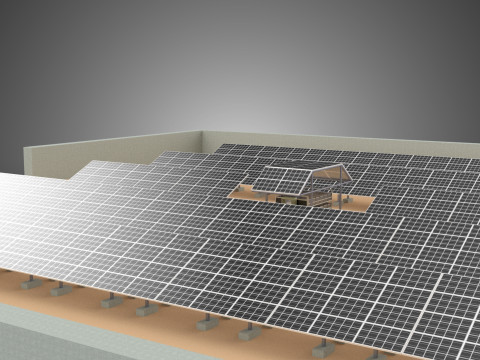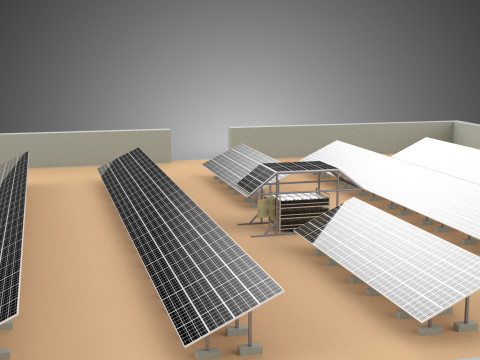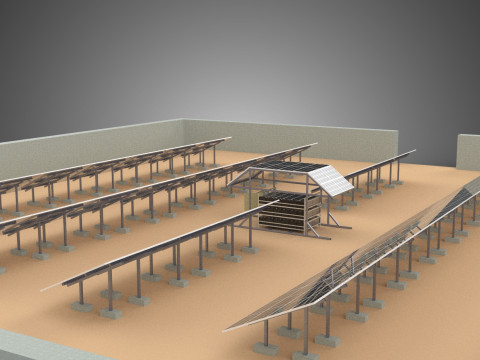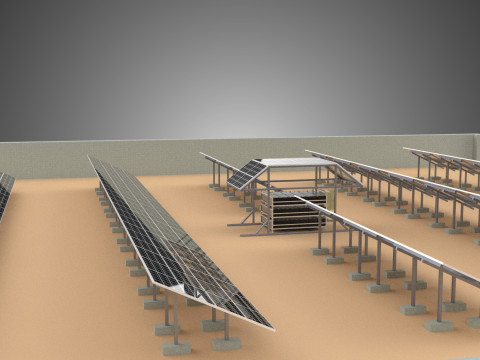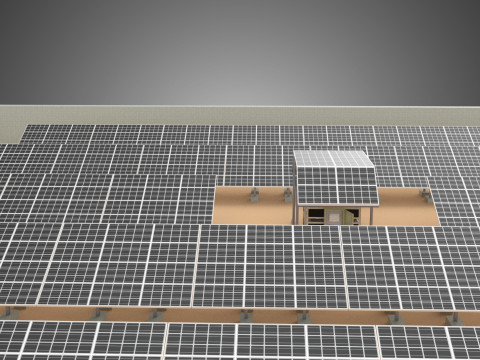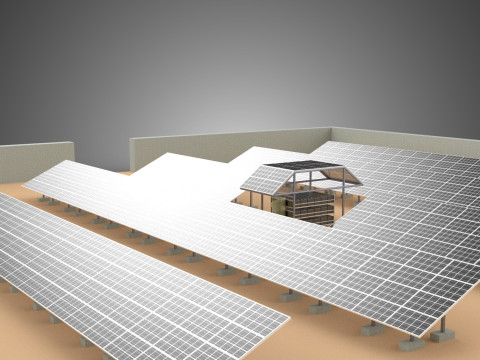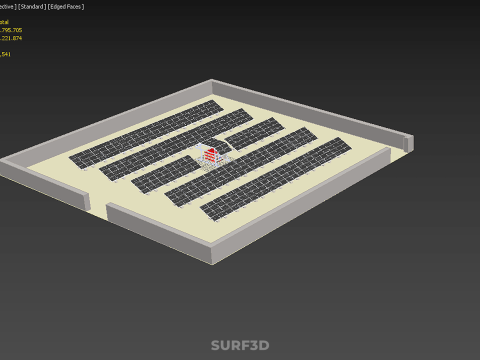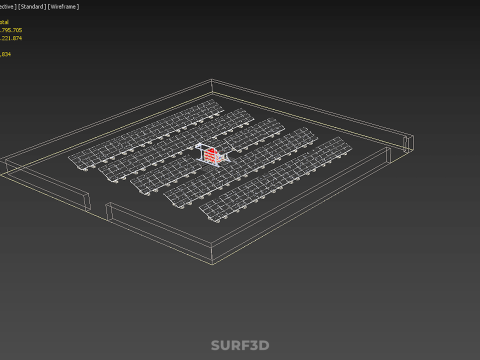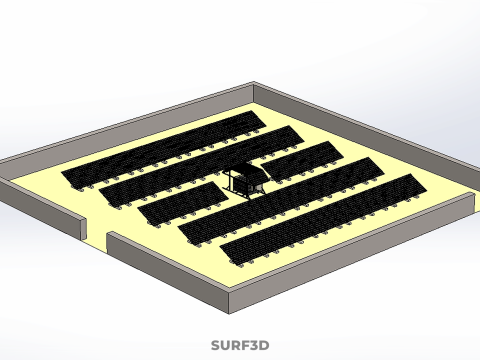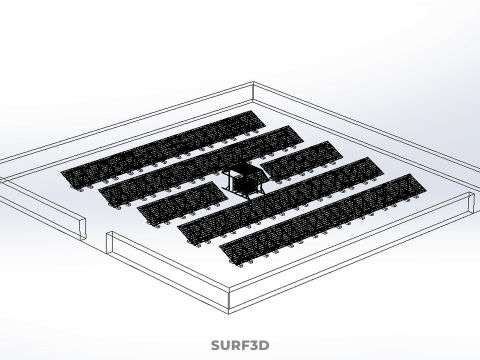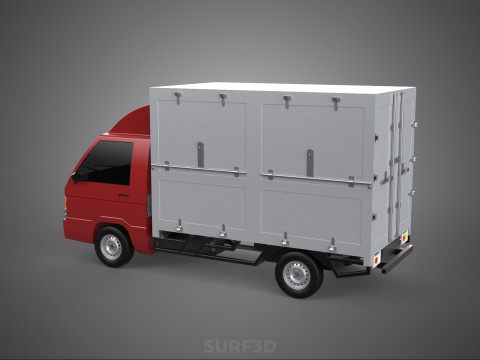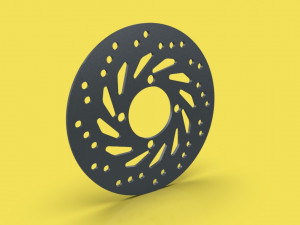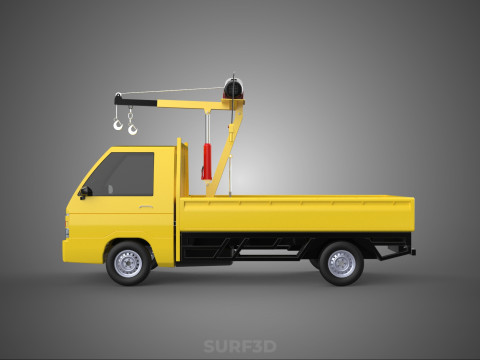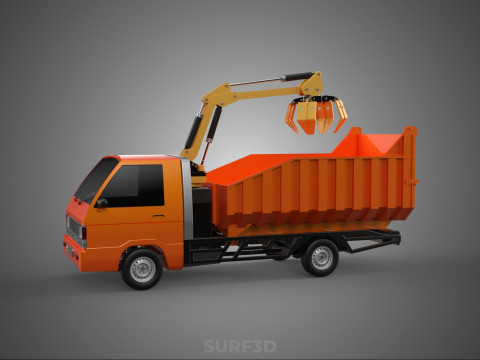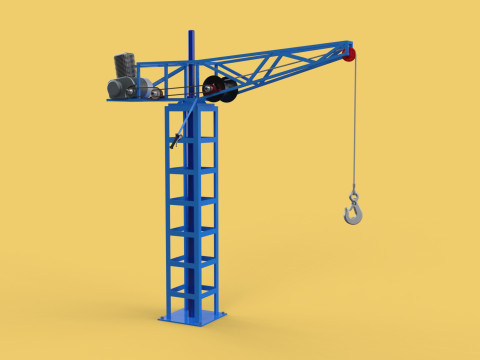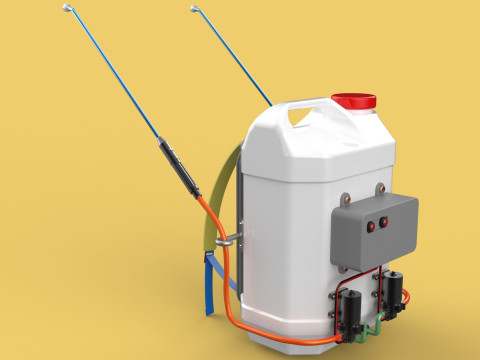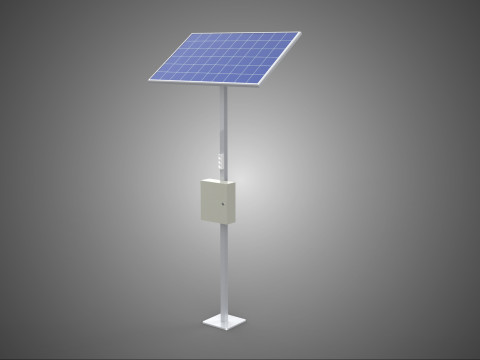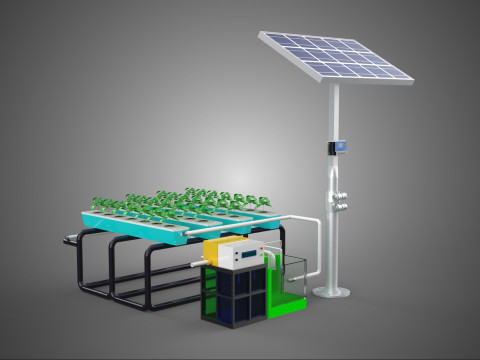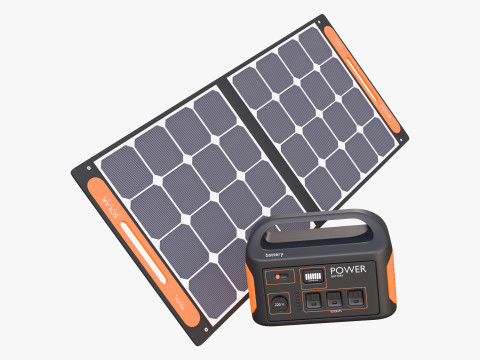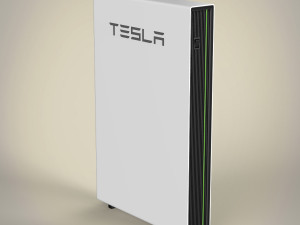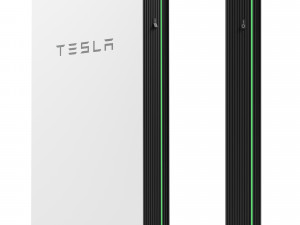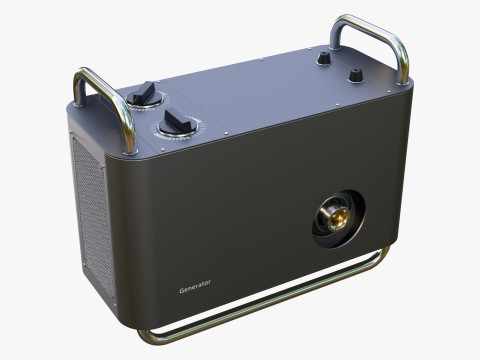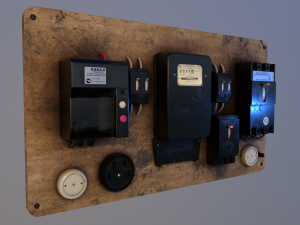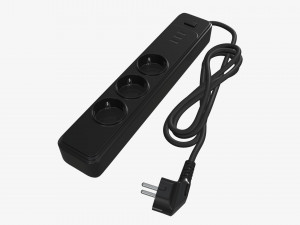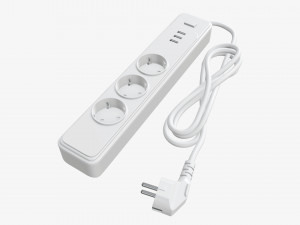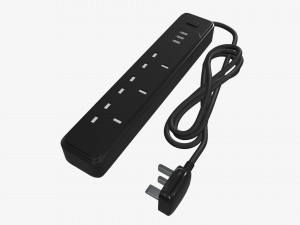SOLAR PANEL POWER LAYOUT SITE INFRASTRUCTURE ENERGY PHOTOVOLTAIC 3D Modell

- Verfügbare Formate: Rhinoceros (.3dm) 6.50 MB3D Studio (.3ds) 6.19 MBBlender3D (.blend) 14.25 MBCollada (.dae) 10.72 MBAutodesk AutoCAD (.dwg) 23.22 MBAutodesk FBX (.fbx) 24.16 MBGLB (.glb / .gltf) 5.86 MBIGES (.iges) 2.49 MBAutodesk 3DS MAX (.max) 36.55 MBWavefront OBJ (.obj) 17.05 MBACIS(.sat) 68.61 MBSketchUp (.skp) 1.54 MBSTEP (.step) 3.02 MBStereolithography (.stl) 12.40 MB
- Polygone:1795705
- Eckpunkte:2221874
- Animiert:No
- Texturen:No
- Rigged:No
- Materialien:
- Low-poly:No
- Sammlung:No
- UVW mapping:No
- Plugins Used:No
- Druckfertige:No
- 3D Scan:No
- Erwachsene:No
- PBR:No
- KI-Training:No
- Geometrie:Poly NURBS
- Unwrapped UVs:Unknown
- Betrachter:138
- Datum: 2025-09-02
- Artikel-ID:596286
High-quality 3D assets at affordable prices — trusted by designers, engineers, and creators worldwide. Made with care to be versatile, accessible, and ready for your pipeline.
Included File Formats
This model is provided in 14 widely supported formats, ensuring maximum compatibility:
• - FBX (.fbx) – Standard format for most 3D software and pipelines
• - OBJ + MTL (.obj, .mtl) – Wavefront format, widely used and compatible
• - STL (.stl) – Exported mesh geometry; may be suitable for 3D printing with adjustments
• - STEP (.step, .stp) – CAD format using NURBS surfaces
• - IGES (.iges, .igs) – Common format for CAD/CAM and engineering workflows (NURBS)
• - SAT (.sat) – ACIS solid model format (NURBS)
• - DAE (.dae) – Collada format for 3D applications and animations
• - glTF (.glb) – Modern, lightweight format for web, AR, and real-time engines
• - 3DS (.3ds) – Legacy format with broad software support
• - 3ds Max (.max) – Provided for 3ds Max users
• - Blender (.blend) – Provided for Blender users
• - SketchUp (.skp) – Compatible with all SketchUp versions
• - AutoCAD (.dwg) – Suitable for technical and architectural workflows
• - Rhino (.3dm) – Provided for Rhino users
Model Info
• - All files are checked and tested for integrity and correct content
• - Geometry uses real-world scale; model resolution varies depending on the product (high or low poly)
• • - Scene setup and mesh structure may vary depending on model complexity
• - Rendered using Luxion KeyShot
• - Affordable price with professional detailing
Buy with confidence. Quality and compatibility guaranteed.
If you have any questions about the file formats, feel free to send us a message — we're happy to assist you!
Sincerely,
SURF3D
Trusted source for professional and affordable 3D models.
More Information About 3D Model :
A Photovoltaic (PV) Solar Panel Power Energy Layout Site Infrastructure describes the comprehensive system and supporting components required to convert solar radiation into usable electricity on a designated site, encompassing everything from the individual PV modules to the connection with the electrical grid. This infrastructure is a critical element in the deployment of solar energy projects, ranging from utility-scale solar farms to commercial and industrial installations.
**I. Photovoltaic Panel and Energy Conversion:**
At its core, the system utilizes **photovoltaic solar panels**, also known as modules, which are assemblies of solar cells. These cells harness the **photovoltaic effect** to convert sunlight directly into direct current (DC) electricity. Multiple panels are connected in series to form **strings**, and multiple strings are connected in parallel to form a **solar array**. The generated DC electricity is then routed through **combiner boxes**, which aggregate the output of several strings. Subsequent to aggregation, **inverters** are employed to convert the variable DC output into alternating current (AC) electricity, which is the standard for transmission and distribution. Depending on the scale, string inverters (for smaller arrays), central inverters (for large utility-scale projects), or microinverters (for individual panels) may be utilized. For grid-connection, the AC power often passes through **transformers** to step up the voltage to levels suitable for transmission or distribution networks.
**II. Site Selection and Preparation:**
The **site selection** process is paramount, influenced by factors such as solar irradiance availability (insolation), land cost and availability, proximity to existing transmission lines or substations, topography, geotechnical conditions, environmental impact, and regulatory frameworks. Once a suitable site is identified, **site preparation** commences. This involves land clearing, grading to create a level and stable surface, establishment of proper drainage systems to prevent erosion and water accumulation, and the construction of perimeter fencing for security. Geotechnical surveys are essential to determine soil stability for foundation design.
**III. System Layout and Mechanical Infrastructure:**
The **layout** of the PV array is meticulously designed to optimize energy yield. This includes determining the optimal tilt angle (fixed or adjustable) and azimuth angle of the panels to maximize solar exposure throughout the year, while minimizing inter-row shading. **Mounting structures** form the mechanical infrastructure, securing the PV panels. These can be fixed-tilt systems, single-axis trackers (which follow the sun's path east to west), or dual-axis trackers (which track both azimuth and elevation) for enhanced energy capture. The design accounts for ***d loads, snow loads, and seismic activity. Internal roads and access paths are integrated into the layout for construction, operation, and maintenance (O&M) activities.
**IV. Electrical and Control Infrastructure:**
The **electrical infrastructure** extends beyond the panels and inverters. It includes a comprehensive network of DC and AC cabling, conduits, junction boxes, and combiner boxes. **Switchgear** and protective devices (e.g., circuit breakers, fuses, surge arresters) are integrated to ensure electrical safety and system reliability. For utility-scale projects, a dedicated **substation** is often constructed to house transformers, switchgear, protection relays, and metering equipment for interconnecting to the national or regional electrical grid. **Monitoring and control systems**, typically employing SCADA (Supervisory Control and Data Acquisition) or similar platforms, are crucial. These systems collect real-time performance data, identify faults, enable remote operation, and optimize energy output. A robust **communication infrastructure**, often utilizing fiber optics or wireless networks, supports data transmission for these control systems.
**V. Ancillary and Security Infrastructure:**
Beyond core power generation, **ancillary infrastructure** includes operational buildings (control rooms, maintenance workshops, storage facilities), water supply for panel cleaning, and waste management facilities. **Security infrastructure** is vital, comprising perimeter fencing, surveillance cameras (CCTV), access control systems, and potentially security personnel, to protect the valuable assets from theft or vandalism. Environmental considerations such as biodiversity management plans, storm water management, and glare analysis are also integrated into the overall site design.
**VI. Operation and Maintenance (O&M) Integration:**
The entire **infrastructure layout** is planned with efficient O&M in mind. This includes accessible pathways, safe working areas, and clear labeling of equipment. The integrated design ensures long-term operational efficiency, system reliability, and maximized energy production throughout the project's lifespan.
In conclusion, a "Photovoltaic Solar Panel Power Energy Layout Site Infrastructure" represents a holistic and integrated engineering approach, encompassing civil, mechanical, and electrical disciplines. Its comprehensive design is fundamental to the efficient, reliable, and secure generation of solar electricity.
KEYWORDS: Photovoltaic, Solar Panel, Renewable Energy, PV System, Solar Farm, Power Plant, Site Infrastructure, Energy Layout, DC-AC Conversion, Inverter, Transformer, Grid Connection, Substation, Electrical Infrastructure, Mechanical Infrastructure, Civil Infrastructure, Mounting Structure, Solar Tracker, Site Selection, Land Preparation, Array Layout, SCADA, Monitoring System, Battery Energy Storage, Energy Storage, O&M, System Design, Environmental Impact, Security Infrastructure, Transmission Line.
Falls Sie ein anderes Format benötigen, eröffnen Sie bitte ein neues Support-Ticket und fragen Sie danach. Wir können 3D Modelle in folgende Formate konvertieren: .stl, .c4d, .obj, .fbx, .ma/.mb, .3ds, .3dm, .dxf/.dwg, .max. .blend, .skp, .glb. Wir konvertieren keine 3D Szenen und Formate wie .step, .iges, .stp, .sldprt usw!


 English
English Español
Español Deutsch
Deutsch 日本語
日本語 Polska
Polska Français
Français 中國
中國 한국의
한국의 Українська
Українська Italiano
Italiano Nederlands
Nederlands Türkçe
Türkçe Português
Português Bahasa Indonesia
Bahasa Indonesia Русский
Русский हिंदी
हिंदी